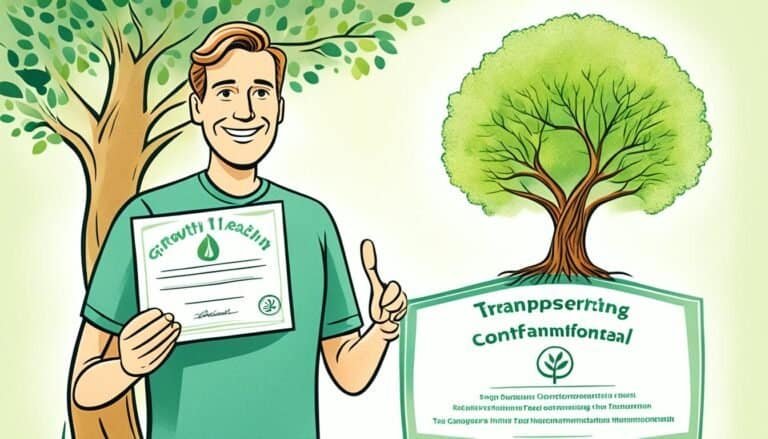Presence: Bringing Your Boldest Self to Your Biggest Challenges – Amy Cuddy
When it comes to facing your biggest challenges, have you ever felt like you're standing on the edge of a cliff, about to leap into the unknown?
In Amy Cuddy's book, 'Presence: Bringing Your Boldest Self to Your Biggest Challenges', she explores the power of harnessing your inner strength and confidence to navigate the complexities of high-pressure situations.
How exactly can you tap into this elusive quality of presence to not just survive but thrive in the face of daunting challenges?
Key Takeaways
- Building confidence is crucial for cultivating presence.
- Mastering body language plays a pivotal role in enhancing presence.
- Overcoming self-doubt and embracing personal power are essential in developing presence.
- Effective stress management techniques are crucial for maintaining composure and navigating high-pressure situations.
Understanding the Concept of Presence
To understand the concept of presence, it's essential to delve into the psychological and physiological aspects that influence your ability to exude confidence and command attention in various situations.
Building confidence is a fundamental component of presence. It involves a deep-seated belief in your capabilities, which allows you to project an aura of assurance and competence.
Mastering body language is another crucial element. Your posture, gestures, and facial expressions all play a significant role in how you're perceived by others. By understanding and controlling these nonverbal cues, you can enhance your presence and convey strength and authority.
Overcoming doubt is also pivotal in cultivating a strong presence. Doubt can manifest as self-consciousness, hesitation, or insecurity, all of which detract from your ability to assert yourself confidently.
Addressing and mitigating these doubts through self-awareness and positive self-talk can bolster your presence. By recognizing and challenging negative thought patterns, you can project a more assured and assertive demeanor.
Unleashing Your Inner Confidence
To unleash your inner confidence, it's essential to understand the power of body language in projecting self-assurance.
Overcoming self-doubt involves recognizing and challenging negative thought patterns, allowing you to embrace your personal power.
Self-Assurance Through Body Language
Unleash your inner confidence through powerful body language, projecting self-assurance in your demeanor and interactions.
Body language empowerment plays a crucial role in building confidence. Adopting expansive postures and gestures can lead to a surge in testosterone levels, which is associated with increased feelings of power and confidence. This phenomenon, known as power posing, can be a powerful tool in boosting self-assurance.
Moreover, maintaining open and relaxed body language, such as standing tall with shoulders back and making eye contact, can exude confidence and assertiveness.
Confidence building techniques through body language also include mirroring the positive nonverbal cues of others to establish rapport and convey self-assuredness.
Overcoming Self-Doubt
Unveil the strategies for overcoming self-doubt and unlocking your inner confidence through practical and proven techniques. Building resilience and overcoming insecurity are essential in this process.
- Developing a Growth Mindset
- Embrace challenges as opportunities for growth.
- View failures as learning experiences rather than personal shortcomings.
- Cultivate a belief in your ability to improve through effort and perseverance.
- Challenging Negative Self-Talk
- Identify and challenge self-limiting beliefs and negative thoughts.
- Replace self-critical thoughts with affirming and empowering statements.
- Practice self-compassion and acknowledge your strengths and accomplishments.
- Seeking Support
- Surround yourself with a supportive network of friends, family, or mentors.
- Seek feedback and guidance to gain perspective and encouragement.
- Engage in open and honest conversations about your insecurities and self-doubt.
Embracing Personal Power
Embracing your personal power requires a deep understanding of your strengths, values, and the impact you can make in your interactions and endeavors. Personal empowerment stems from recognizing your inner strength and using it to navigate through challenges. It involves acknowledging your capabilities and having confidence in your abilities.
Inner strength, a key component of personal power, enables you to stay resilient in the face of adversity and helps you maintain a sense of self-assurance. It allows you to stand firm in your convictions and assert your ideas with confidence.
Embracing personal power is about harnessing your inner strength to project an authentic and assertive presence, enabling you to tackle life's challenges with confidence and determination. Recognizing and embracing your personal power can lead to greater self-assurance and a more impactful presence in all aspects of your life.
Harnessing Body Language for Impact
Harnessing body language effectively can significantly impact your ability to convey confidence and influence others in various situations. Nonverbal communication plays a crucial role in how others perceive you and can greatly influence your success in different interactions. Power poses, as suggested by social psychologist Amy Cuddy, are one way to harness body language for impact. Here's how you can do it:
- Open Posture: Adopting an open posture, such as standing tall with your shoulders back and making eye contact, can convey confidence and authority. This posture can make you appear more approachable and trustworthy, leading to better connections with others.
- Expansive Gestures: Using expansive gestures when speaking can help emphasize your points and demonstrate passion and conviction. These gestures can also make you appear more engaging and persuasive.
- Taking Up Space: Physically taking up more space, such as by sitting or standing with your legs shoulder-width apart, can convey a sense of power and confidence. This can lead to increased feelings of dominance and assertiveness, affecting both your own mindset and how others perceive you.
Overcoming Imposter Syndrome
To overcome imposter syndrome, you must first recognize and challenge the self-doubt that undermines your sense of accomplishment and capability. Building confidence is essential in combating imposter syndrome.
Focus on your strengths and achievements, and remind yourself of your competence. Take note of positive feedback and keep a record of your accomplishments to refer back to when self-doubt creeps in.
Defeating doubt requires a shift in mindset. Instead of fixating on perceived shortcomings, reframe your thoughts to acknowledge that everyone experiences feelings of inadequacy at times. Recognize that imposter syndrome is a common experience and doesn't diminish your worth or abilities.
Seek support from mentors, colleagues, or friends who can provide encouragement and perspective. Additionally, set realistic goals and challenge yourself gradually to expand your comfort zone.
Navigating High-Pressure Situations
When facing high-pressure situations, it's crucial to manage stress effectively and maintain composure under pressure.
The ability to stay calm and focused can greatly impact your performance and decision-making.
Research suggests that individuals who effectively navigate high-pressure situations often employ strategies such as mindfulness, deep breathing, and positive self-talk.
Managing Stress Effectively
In high-pressure situations, effectively managing stress is crucial for maintaining focus and making sound decisions. When navigating high-pressure situations, it's essential to prioritize stress management and mental wellness. Here are some key techniques to help you manage stress effectively:
- Relaxation Techniques
- Deep breathing exercises can help calm your mind and reduce stress levels.
- Progressive muscle relaxation can release tension and promote a sense of calmness.
- Mindfulness Practices
- Practicing mindfulness can help you stay grounded in the present moment, reducing anxiety about the future.
- Mindful meditation can enhance self-awareness and promote emotional regulation.
Implementing these techniques can aid in maintaining composure and clarity of thought when facing high-pressure challenges.
Maintaining Composure Under Pressure
During high-pressure situations, maintaining composure is essential for making clear, rational decisions and staying focused on your objectives. It's crucial to understand that composure isn't about suppressing emotions, but rather about managing them effectively to stay focused and handle stress. Research suggests that individuals who are able to maintain composure under pressure are more likely to perform well in challenging situations. Here are some strategies to help you maintain composure and handle stress effectively:
| Maintaining Focus | Handling Stress |
|---|---|
| Identify priorities and objectives | Practice deep breathing techniques |
| Break tasks into smaller steps | Use positive self-talk |
| Visualize successful outcomes | Utilize time management strategies |
| Minimize distractions | Seek social support |
Cultivating Authenticity and Resilience
To cultivate authenticity and resilience, focus on developing a deep understanding of your core values and strengths, and actively seek out opportunities to apply them in challenging situations. Cultivating resilience and authentic leadership involves the following steps:
- Identify Core Values and Strengths:
Reflect on the values that are most important to you and the strengths that define your character. Understand how these values and strengths contribute to your authentic leadership style.
- Seek Opportunities for Application:
Actively seek out situations that challenge you to embody your core values and leverage your strengths. Embrace opportunities that allow you to demonstrate resilience in the face of adversity.
- Reflect and Adapt:
After engaging in challenging situations, take time to reflect on your responses and actions. Adapt and refine your approach based on what you learn about yourself and your ability to embody authenticity and resilience.
Applying Presence in Professional and Personal Life
Having cultivated authenticity and resilience, you can now explore the practical applications of presence in both your professional and personal life. Applying presence involves consciously leveraging your body language, mindset, and communication style to build confidence and empower yourself in various contexts. In your professional life, presence can greatly contribute to your professional growth by enhancing your leadership abilities, improving your communication with colleagues and clients, and increasing your overall performance. In your personal life, it can lead to personal empowerment, stronger relationships, and improved self-esteem. To help illustrate the practical applications of presence, consider the following table:
| Professional Life | Personal Life |
|---|---|
| Enhanced Leadership | Personal Empowerment |
| Improved Communication | Stronger Relationships |
| Increased Performance | Improved Self-esteem |
Conclusion
In conclusion, Amy Cuddy's 'Presence' offers valuable insights on how to bring out your best self in challenging situations.
By understanding the power of body language, overcoming imposter syndrome, and cultivating authenticity, you can navigate high-pressure situations with confidence and resilience.
So, go ahead and unleash your inner presence, like a beacon of light guiding you through the stormy sea of challenges.
You'll be amazed at the impact it can have on both your professional and personal life.






